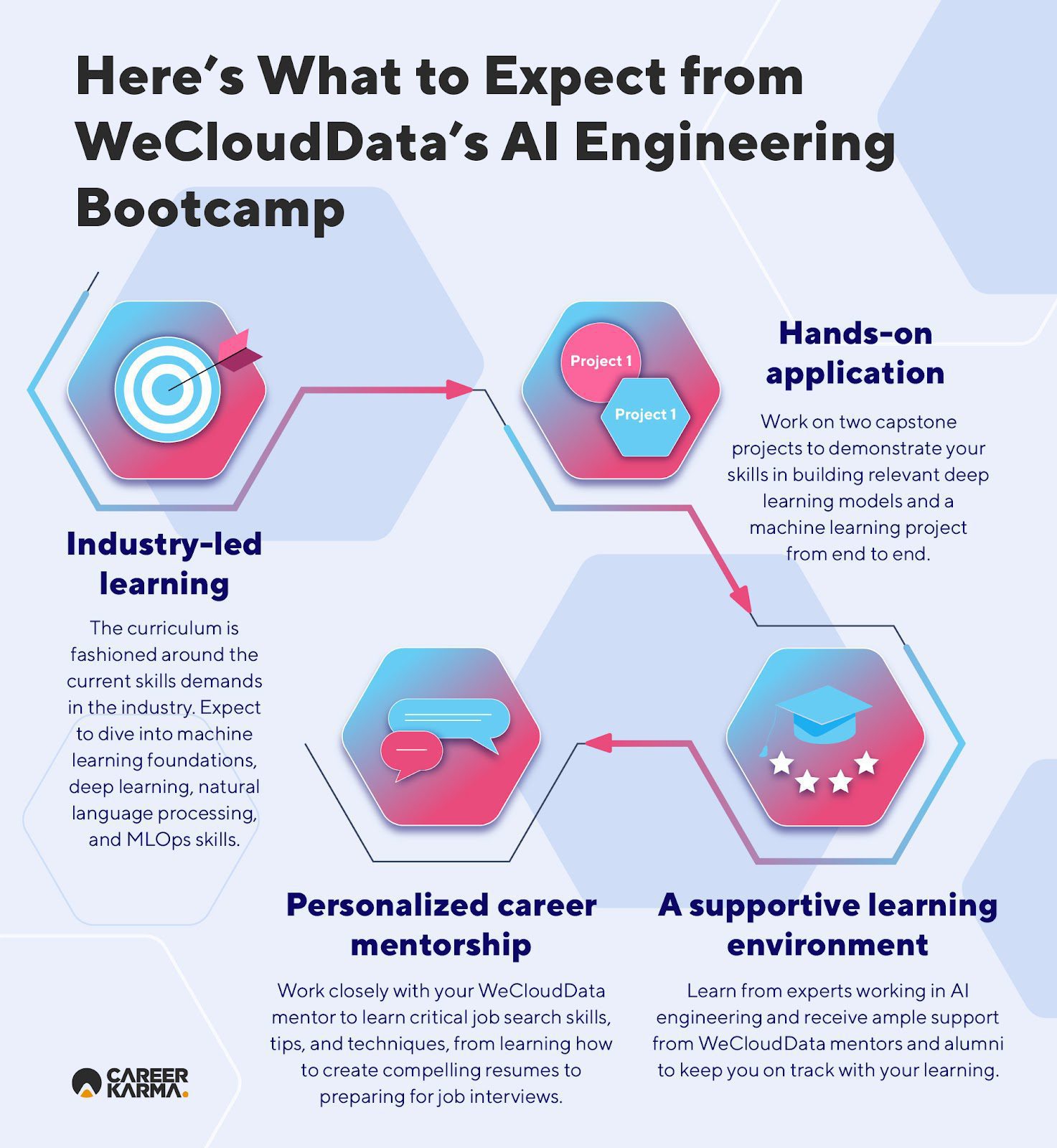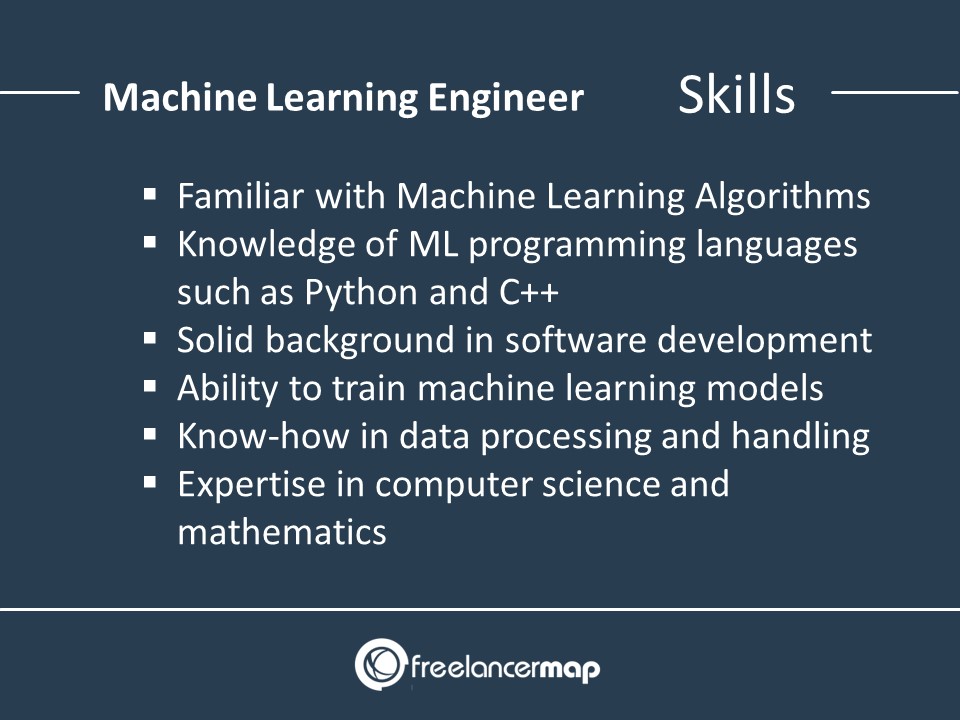All Categories
Featured
Table of Contents
- – The Single Strategy To Use For Machine Learnin...
- – Rumored Buzz on Machine Learning Engineers:req...
- – 8 Simple Techniques For How To Become A Machi...
- – A Biased View of What Does A Machine Learning...
- – The Only Guide for How To Become A Machine L...
- – Getting The Is There A Future For Software E...
- – Not known Facts About Become An Ai & Machine...
Some people believe that that's cheating. If somebody else did it, I'm going to use what that individual did. I'm requiring myself to think through the possible services.
Dig a little deeper in the mathematics at the start, so I can develop that structure. Santiago: Finally, lesson number seven. This is a quote. It claims "You need to recognize every information of a formula if you desire to use it." And after that I state, "I think this is bullshit guidance." I do not believe that you need to recognize the nuts and bolts of every algorithm before you use it.
I've been using neural networks for the longest time. I do have a sense of just how the gradient descent works. I can not discuss it to you now. I would certainly need to go and inspect back to really obtain a better intuition. That does not indicate that I can not resolve things making use of neural networks? (29:05) Santiago: Attempting to force people to believe "Well, you're not mosting likely to be effective unless you can describe every solitary information of just how this functions." It returns to our arranging example I assume that's simply bullshit advice.
As an engineer, I've dealt with several, many systems and I've made use of numerous, numerous points that I do not understand the nuts and bolts of how it works, even though I understand the effect that they have. That's the last lesson on that particular string. Alexey: The amusing point is when I consider all these collections like Scikit-Learn the algorithms they utilize inside to execute, for instance, logistic regression or something else, are not the like the formulas we examine in artificial intelligence classes.
The Single Strategy To Use For Machine Learning Is Still Too Hard For Software Engineers
Even if we tried to find out to obtain all these basics of maker discovering, at the end, the algorithms that these collections use are various. Santiago: Yeah, absolutely. I assume we need a lot extra materialism in the market.

By the way, there are two various paths. I typically speak to those that intend to operate in the sector that intend to have their effect there. There is a path for researchers which is entirely various. I do not dare to mention that due to the fact that I don't recognize.
Right there outside, in the sector, pragmatism goes a long way for certain. (32:13) Alexey: We had a comment that stated "Feels even more like motivational speech than talking regarding transitioning." So possibly we ought to change. (32:40) Santiago: There you go, yeah. (32:48) Alexey: It is a great motivational speech.
Rumored Buzz on Machine Learning Engineers:requirements - Vault
One of the things I desired to ask you. First, allow's cover a pair of things. Alexey: Let's begin with core tools and structures that you require to learn to actually change.
I recognize Java. I recognize SQL. I understand how to make use of Git. I know Celebration. Perhaps I know Docker. All these points. And I hear concerning artificial intelligence, it looks like a trendy thing. What are the core devices and frameworks? Yes, I enjoyed this video and I get persuaded that I don't need to obtain deep right into math.
What are the core devices and structures that I require to discover to do this? (33:10) Santiago: Yeah, absolutely. Fantastic concern. I think, primary, you need to start finding out a bit of Python. Because you currently know Java, I do not assume it's mosting likely to be a big shift for you.
Not due to the fact that Python is the exact same as Java, but in a week, you're gon na obtain a great deal of the differences there. You're gon na be able to make some progression. That's top. (33:47) Santiago: After that you get specific core devices that are mosting likely to be utilized throughout your entire profession.
8 Simple Techniques For How To Become A Machine Learning Engineer Without ...
That's a library on Pandas for information manipulation. And Matplotlib and Seaborn and Plotly. Those 3, or one of those three, for charting and displaying graphics. After that you obtain SciKit Learn for the collection of artificial intelligence algorithms. Those are tools that you're going to have to be using. I do not recommend just going and finding out about them out of the blue.
Take one of those programs that are going to start introducing you to some troubles and to some core ideas of maker understanding. I do not remember the name, however if you go to Kaggle, they have tutorials there for cost-free.
What's good regarding it is that the only requirement for you is to understand Python. They're going to present a trouble and inform you how to utilize decision trees to fix that details issue. I assume that procedure is very effective, due to the fact that you go from no device finding out background, to understanding what the problem is and why you can not solve it with what you recognize right currently, which is straight software engineering practices.
A Biased View of What Does A Machine Learning Engineer Do?
On the other hand, ML designers concentrate on structure and deploying artificial intelligence models. They concentrate on training versions with data to make predictions or automate tasks. While there is overlap, AI designers handle even more varied AI applications, while ML engineers have a narrower concentrate on equipment learning algorithms and their functional implementation.

Maker learning engineers focus on establishing and deploying machine learning versions into production systems. On the various other hand, information scientists have a wider function that consists of information collection, cleaning, expedition, and structure designs.
As organizations increasingly embrace AI and equipment learning modern technologies, the demand for proficient specialists expands. Maker discovering designers work on advanced tasks, contribute to advancement, and have competitive incomes.
ML is essentially various from conventional software program advancement as it concentrates on mentor computer systems to pick up from data, instead than shows explicit policies that are implemented methodically. Uncertainty of results: You are possibly made use of to writing code with predictable results, whether your feature runs when or a thousand times. In ML, nonetheless, the results are less specific.

Pre-training and fine-tuning: Exactly how these models are trained on vast datasets and then fine-tuned for particular jobs. Applications of LLMs: Such as message generation, view analysis and info search and retrieval.
The Only Guide for How To Become A Machine Learning Engineer [2022]
The capability to manage codebases, merge adjustments, and fix disputes is equally as crucial in ML development as it remains in conventional software application jobs. The abilities established in debugging and screening software application applications are extremely transferable. While the context might transform from debugging application reasoning to identifying issues in information handling or design training the underlying principles of systematic investigation, theory screening, and repetitive refinement coincide.
Artificial intelligence, at its core, is heavily reliant on statistics and chance theory. These are vital for recognizing exactly how formulas discover from information, make forecasts, and assess their performance. You should consider becoming comfortable with principles like statistical relevance, distributions, theory testing, and Bayesian reasoning in order to style and translate versions efficiently.
For those interested in LLMs, a complete understanding of deep discovering designs is valuable. This consists of not only the technicians of semantic networks however likewise the architecture of specific designs for various usage cases, like CNNs (Convolutional Neural Networks) for photo processing and RNNs (Reoccurring Neural Networks) and transformers for consecutive data and natural language processing.
You must be conscious of these problems and find out strategies for determining, minimizing, and communicating regarding predisposition in ML designs. This consists of the potential impact of automated choices and the honest implications. Many designs, particularly LLMs, need substantial computational resources that are typically given by cloud platforms like AWS, Google Cloud, and Azure.
Structure these skills will certainly not only promote a successful transition right into ML however additionally ensure that designers can add successfully and properly to the innovation of this dynamic area. Concept is important, however absolutely nothing defeats hands-on experience. Begin servicing tasks that permit you to apply what you've discovered in a sensible context.
Join competitors: Sign up with systems like Kaggle to take part in NLP competitions. Build your projects: Start with simple applications, such as a chatbot or a message summarization device, and slowly increase intricacy. The area of ML and LLMs is quickly progressing, with new advancements and innovations emerging routinely. Staying updated with the current research and patterns is vital.
Getting The Is There A Future For Software Engineers? The Impact Of Ai ... To Work
Join communities and online forums, such as Reddit's r/MachineLearning or neighborhood Slack channels, to go over ideas and get advice. Go to workshops, meetups, and conferences to connect with various other professionals in the area. Add to open-source tasks or create article concerning your discovering trip and projects. As you acquire competence, start looking for possibilities to incorporate ML and LLMs right into your job, or seek new functions concentrated on these innovations.

Possible usage instances in interactive software application, such as referral systems and automated decision-making. Understanding uncertainty, fundamental analytical procedures, and probability circulations. Vectors, matrices, and their function in ML algorithms. Mistake minimization techniques and slope descent explained merely. Terms like model, dataset, attributes, labels, training, reasoning, and validation. Data collection, preprocessing techniques, design training, analysis procedures, and release considerations.
Choice Trees and Random Woodlands: Intuitive and interpretable models. Support Vector Machines: Optimum margin category. Matching issue kinds with proper versions. Stabilizing performance and complexity. Standard structure of semantic networks: neurons, layers, activation functions. Split calculation and ahead proliferation. Feedforward Networks, Convolutional Neural Networks (CNNs), Frequent Neural Networks (RNNs). Photo acknowledgment, sequence forecast, and time-series evaluation.
Constant Integration/Continuous Release (CI/CD) for ML operations. Design surveillance, versioning, and performance tracking. Spotting and attending to modifications in design performance over time.
Not known Facts About Become An Ai & Machine Learning Engineer

You'll be presented to three of the most relevant components of the AI/ML discipline; overseen discovering, neural networks, and deep understanding. You'll realize the differences between conventional programming and maker learning by hands-on growth in monitored understanding before constructing out complicated distributed applications with neural networks.
This program functions as a guide to machine lear ... Show Extra.
Table of Contents
- – The Single Strategy To Use For Machine Learnin...
- – Rumored Buzz on Machine Learning Engineers:req...
- – 8 Simple Techniques For How To Become A Machi...
- – A Biased View of What Does A Machine Learning...
- – The Only Guide for How To Become A Machine L...
- – Getting The Is There A Future For Software E...
- – Not known Facts About Become An Ai & Machine...
Latest Posts
Software Developer Career Guide – From Interview Prep To Job Offers
The Google Software Engineer Interview Process – A Complete Breakdown
Mastering The Software Engineering Interview – Tips From Faang Recruiters
More
Latest Posts
Software Developer Career Guide – From Interview Prep To Job Offers
The Google Software Engineer Interview Process – A Complete Breakdown
Mastering The Software Engineering Interview – Tips From Faang Recruiters